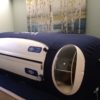Cecilia and Jacob Speranzella, teenage siblings and residents of Minneapolis, were recently the victims of a vehicular accident that left them both in the hospital, fighting for their lives. The accident occurred when Cecilia, 19, was crossing Lake Street with her 14-year-old brother, Jacob, in order to buy ice-cream in their little Minneapolis neighborhood.
A carjacker, being driven by a man who was allegedly under the influence of illicit substances at the time, crashed into the two teens and caused them to get violently thrown against a local bakery. The brother and sister struck one of the windows of the building, with Cecilia landing on the sidewalk while Jacob went through the glass.
Cecilia suffered a major head injury and had to undergo surgery to relieve some of the pressure building in her brain as a result of internal bleeding. Jacob, on the other hand, suffered several deep cuts and broken bones all over his body. Both of them were rushed to the hospital immediately after the accident and received life-saving treatment soon after.
More Read: Hyperbaric Chamber for Athletes: What Are Its Features and Benefits?
Steven D. Ross, 48, was arrested a few days after the accident and charged with criminal vehicular operation causing substantial bodily harm as well as simple robbery (for having allegedly stolen the vehicle he was driving when he hit the teenagers). After his arrest. Ross told the police that he had, on the day of the accident, abused illicit substances which may have compromised his ability to drive safely. He did, however, claim to have tried to avoid hitting the teenage siblings.
The Role of Hyperbaric Therapy in Cecilia’s Recovery
The accident left Cecilia Speranzella with severe brain injury. Soon after her hospitalization, doctors recommended a clinical trial that made use of hyperbaric chambers for her treatment. Her parents agreed to try out this alternative treatment option for their daughter’s recovery. Over the years, the use of hyperbaric therapy for brain injury has gained significant mainstream traction in the medical community.
Within hours of the crash, Cecilia underwent the first of much hyperbaric oxygen therapy (HBOT) sessions at the Hennepin County Medical Center. The HBOT sessions continued for the next five days and Cecilia’s parents, Joe and Mitzi Speranzella, were gratified to see a remarkable improvement in their daughter’s condition. “CeCe is going on her last dive in the HCMC hyperbaric chamber, pray for daily and long term benefits of this treatment!” Mitzi Speranzella wrote on Facebook, opening up about her daughter’s battle for survival.
Joe Speranzella agreed that the hyperbaric treatment had helped Cecilia regain consciousness quicker than she probably would have on her own. Moreover, according to her father, the increased supply of oxygen had also sped up the healing process of the cuts, wounds, and bruises on her body. Both her parents expressed their gratitude to the doctors who had helped their daughter gain access to the hyperbaric treatment after the accident.
How Does Hyperbaric Therapy Work?
The use of hyperbaric therapy for brain injury is still relatively rare, although more and more physicians are nowadays recommending this alternative treatment option for treating traumatic brain injury (TBI), severe concussions, and other related conditions. Numerous chronic or acute neurological conditions have also, over the years, responded quite well to HBOT.
Studies have shown that a few hyperbaric sessions can cause a great reduction in the symptoms of brain injury, even if the treatment is administered months or even years after the original injury had occurred. However, hyperbaric therapy for brain injury is most effective when the treatment is administered soon after the original injury, as in the case of Cecilia Speranzella.
Hyperbaric therapy works by suffusing the patient’s brain and body with pure, pressurized oxygen. To receive the treatment, the patient enters a sealed vessel called the hyperbaric chamber. Inside this vessel, pure and unadulterated oxygen is administered to the patient at heightened levels of atmospheric pressure.
Breathing in this oxygen, the patient is able to recover quickly as the extra oxygen facilitates tissue regeneration and stem cell creation in the body and the brain. It also prevents oxidative stress and helps boost the immune system. Each session can last from sixty to ninety minutes.
Thanks to hyperbaric therapy, the pressurized oxygen dissolves quickly into the bodily fluids such as cerebrospinal fluid and blood plasma. This enhances the supply of oxygen to the injured parts of the brain, which had so far been deprived of oxygen due to damaged blood vessels. Thus, HBOT helps revitalize and repair the areas of the brain that had been damaged by the injury.
In Conclusion
HBOT can be used for both symptom management and overall recovery by patients like Cecilia who are suffering from severe brain injuries. Over the years, hyperbaric therapy for brain injury has also been prescribed for patients who had survived near-drowning incidents, sporting accidents, car crashes, and all other types of incidents that could possibly cause damage to the brain. Like the Speranzella kids, many have experienced miraculous recovery with the help of HBOT.
![]()









